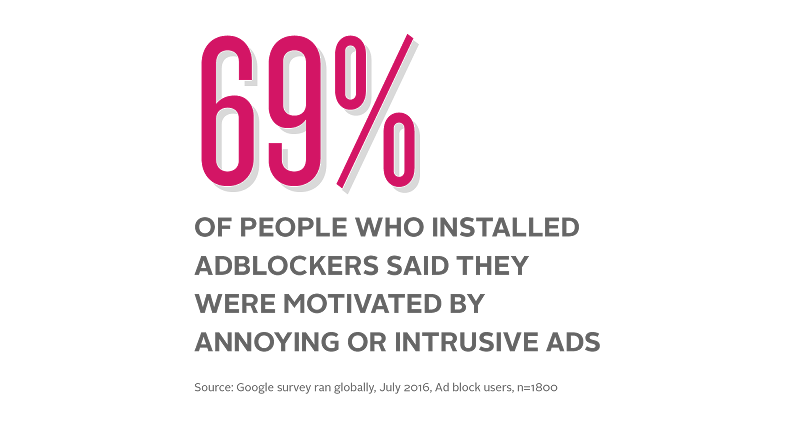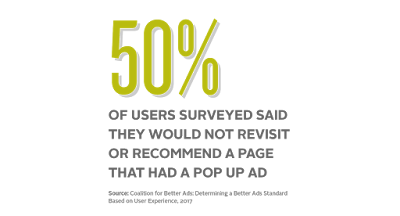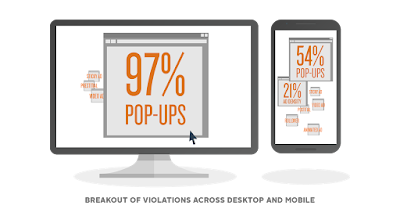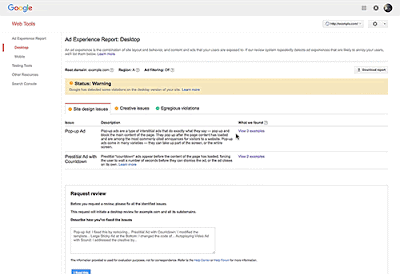To help advertisers engage their audiences in more places, and to enable publishers to capture growing video budgets across their non-video content on sites and apps, we recently released four new programmatic out-stream video formats in a new beta on DoubleClick. We’re also working closely with the IAB Tech Lab Open Measurement Working Group to ensure that all of our new video formats are easily measurable across all platforms and devices.
In-article and in-feed formats put video ads front and center in publisher content
With out-stream ads on DoubleClick, publishers can serve video ads across their content feeds and within their articles programmatically. Both in-feed and in-article video ads seamlessly fit a user's scrolling behavior on both web and apps; and they are muted by default to ensure they don’t disrupt the user. Moreover, the ads only play when 50% or more of the ad is in view, ensuring higher viewability rates. If users choose to engage with an ad, they can tap to unmute the video.On average, out-stream video ads are earning 8.9x higher CPMs compared to standard banner ad CPMs on DoubleClick Ad Exchange. 2 And in certain regions, among the 100+ publishers who have already signed up for the beta, partners have seen substantially greater CPM lift as we’ve continued to fine tune and scale the new formats.
In-Article Video Demo
In-Feed Video Demo
Native video ads conform to perform
Native video ads are designed to fit the form and function of the surrounding page or app. Using standardized ad components like headline, description, logo, and video files, publishers can create custom ad experiences that are seamlessly integrated across their sites and apps.Since launching their “Adapt” native video ad format with DoubleClick, Time Inc. has seen a 5x increase in video inventory available across their properties. Ashley Allen, Director of Ad Product Solutions at Time Inc. commented, “Adapt gives us the flexibility to meet the demands of our advertisers while responding to the behaviors of our audiences. DoubleClick’s native ad technology has enabled us to capture this opportunity as quickly as we’ve been able to.”
Native Video Demo
Rewarded video ads deliver value for users and engagement for game developers
Games are among the most popular types of apps, pulling in a high percentage of male and female users of all ages, 96% of whom engage with gaming apps every week.3 Game developers using DoubleClick Rewarded video ads are capitalizing on growing usage by creating non-intrusive, user-initiated ad experiences that offer users something of value (like an extra life in a game) in exchange for viewing a video ad.In 2017, Nestlé ran a campaign in the UK with King, the gaming company behind Candy Crush, offering users an extra life or boost in their games in exchange for watching a video ad. The user-initiated placements generated a 99.5% view-through rate and a 3% click-through rate across Android devices.4 Performance like this underlines the fact that when users’ experiences and choices are respected, both the advertiser and the publisher benefit from increased engagement.
Rewarded Video Demo
Ensuring accountability across new video formats, devices and platforms
In addition to developing new video ad formats, we're also working to ensure that video viewability is easily measurable across all platforms and devices -- including mobile apps. To accomplish this, we’re integrating the Open Measurement SDK into both our Google Mobile Ads and Interactive Mobile Ads SDKs. Once implemented, mobile app publishers and game developers will be able to power any vendor’s measurement tools, which in turn will reduce development time and streamline deal negotiations with advertisers.The initiative marks a significant step towards improving the measurability of in-app video ads and we're working closely with partners like King to test the Google Mobile Ads SDK integration in their gaming apps.
"For the industry at large, The Open Measurement SDK will create a universal standard for the collection of video viewability data and reduce reporting inconsistencies across the mobile app landscape. For King, the single-source solution will enable us to engage with advertisers regardless of their preferred measurement vendor. As a result, mobile in app video will become a more predictable advertising channel, which in turn will create more demand for our inventory."
--Brian Ames, President of Advertising at King
Out-stream video formats are poised to play an important role in the future of video advertising for publishers, because they create a meaningful opportunity to increase the demand for and value of their content and audiences. As advertisers continue to demand more premium video inventory, non-video publishers and game developers should take note, as they may be sitting on a treasure trove of video ad impressions. We look forward to sharing more of our work and innovations in these areas in the months ahead.
 | Posted by Benyah Shaparenko Product Manager, Google |













